Hey there, aspiring filmmaker! Yes, you, with the camera and the burning desire to make your mark in the film industry. We see you, feeling a bit lost in the maze of filmmaking intricacies, wondering how to become a filmmaker, how to become a video editor, and, more importantly, how to shoot a short film without breaking the bank.
Guess what? We believe in you.
You might be grappling with questions about storytelling, budgeting, or navigating the labyrinth of set design, makeup, actors, editing, sound, and lighting. The dreams you’ve woven might seem like an unreachable fantasy, but hold on to your director’s chair because here’s a secret: You can create quality indie short films, and you don’t need a hefty budget or a film school degree to do it.
Let’s kick things off by getting you off that metaphorical or literal couch. Yes, you heard us right. Quit dwelling on the idea that you need a $25,000 budget for your dream short film. No more whining, and no more thinking a film school degree is the golden ticket. It’s not. What you need is time, dedication, and a willingness to learn the ins and outs of indie filmmaking.
Through the guidance we’ve prepared in this article, you’ll discover that you don’t need a massive budget to make compelling short films. And forget the notion that a film school degree is the sole pathway to honing your filmmaking skills. It’s about your dedication, hard work, and the willingness to learn how to frame scenes, direct, edit, and navigate the intricate world of filmmaking.
By following the steps outlined in this article, you’ll learn the art of crafting solid short films that can proudly grace film festivals. The best part? You can achieve this without the weighty burden of a film school degree or deep pockets. With some inner drive, a touch of fear, a bit of money, and a lot of ingenuity, you can carve a path for yourself in the film business.
So, if you’ve got that burning desire to make short films, welcome aboard. You’ve probably picked up “Cheap Movie Tricks: How to Shoot a Short Film for Under $2,000” because you’re seeking guidance, a self-help book for filmmakers. Well, you’ve struck gold, my friend.
In the following sections, we’re not just going to guide you; we’re going to mold you into a smart indie filmmaker, a cost-cutting planner, a genius storyteller, a creative editor, and a filmmaking effects guru. Consider us your mentors on this exciting journey, and soon, your friends and strangers alike will think you’re a filmmaking magician.
But before we dive into the nitty-gritty of Cheap Movie Tricks, there’s something you need to understand about being a filmmaker. This isn’t an easy ride; there’s no shortcut through this career path. If you’re looking for mindless tasks, go sell paper dolls or make mud pies. Filmmaking demands commitment, focus, and, above all, a positive outlook.
Are you ready to commit? Are you on your feet now? Dust yourself off because you’re about to learn how to take the short film process from the project’s inception all the way to the film festival circuit. It might seem like a long road, but trust us, it’s not as lengthy as you think. If we could do it, so can you.
Now, think of “Cheap Movie Tricks” as your reference guide, providing insights into all facets of indie filmmaking. You’ll gain tips on locations, story development, scriptwriting, budgeting, set design, costumes, talent selection, crew management, special effects, makeup, filming and editing tricks, sound and light considerations, promotion, and navigating the film festival circuit.
Prepare to have your mind blown by the wealth of information awaiting you in “Cheap Movie Tricks.” You’re probably already wondering why you didn’t stumble upon this book earlier. Don’t worry; just follow us on social media, and we’ll call it even.
And hey, if doubt starts creeping across your face, questioning whether you should even make short films with all these filmmaking secrets at your disposal, here’s the answer: Short films are your constructive entry point into the film industry. They serve as stepping stones, allowing you the potential to be noticed by producers willing to fund your next film, whether short or feature-length. Of course, there’s a caveat – your work has to be good, maybe even great. Success might take more than a few attempts.
So, why start with short films? It’s a way to hone your craft, work those filmmaking muscles, and learn the ropes on a smaller, more manageable scale. Building your creative prowess through short films is like crafting a model home to showcase your architectural skills before venturing into building actual houses.
In the upcoming sections, we’ll guide you through the end goal of your short film project and provide you with a checklist to ensure you’re ready. From choosing the right camera to understanding the significance of lighting and sound, we’ve got you covered.
But before we delve into the technicalities, let’s dispel a myth perpetuated by those who suggest not spending time on short films. Often, these individuals are sitting on a pile of money, went to film school, and can shoot a feature on Daddy’s dime. Here’s the truth – self-taught filmmakers like James Cameron, Quentin Tarantino, and Robert Rodriguez have made significant contributions to the industry. So, spend time on short films, but start with “Cheap Movie Tricks” because, by the end of this journey, you’ll truly be a filmmaker.
Now, grab your camera, and as Samuel L. Jackson said in Jurassic Park, “Hold onto your butts!” Let’s figure out your short film’s end goal and get you ready with a checklist.
Figuring Out Your Short Film End-Goal
If you have a specific film festival in mind, start researching what resonates with that festival’s audience. Tailor your film to fit the festival’s theme or industry requirements. Short films can act as artistic statements or resumes for the film industry, sometimes even both. Knowing the end goal of your project will guide you in the right direction.
Getting Ready! Short Film Checklist
-
Camera: If you don’t have a camera, you don’t have a movie. A DSLR camera is recommended for its versatility in both photography and video. You can find a decent Canon with a zoom lens for around $500.
-
Lights: Lighting can make or break the film quality. Consider inexpensive bell lights from hardware stores – they’re easy to clip anywhere and cost under $10.
-
Sound: Poor sound quality can ruin a movie. Avoid using the DSLR’s built-in mic; instead, record sound separately. Zoom recorders are affordable options, priced around $100.
Remember, short films can be stepping stones to bigger opportunities in the film industry. They showcase your talent, allowing you to refine your craft and catch the eye of producers. So, why start small? Because, as our favorite mantra goes, “Big Tricks, Small Packages.” Short films provide a platform for you to build your creative muscles, learn the ropes, and potentially launch your filmmaking career.

How to Make a Short Film Guide:
1. Embarking on the Scriptwriting Journey: Building the Foundation
Before your pen hits the paper, immerse yourself in the teachings of “Save the Cat” by Bryan Snyder—a scriptwriting compass guiding you through the nuances of storytelling. This foundational stage is about more than just writing; it’s about absorbing the principles that turn words into compelling narratives.
Additionally, delve into the treasure trove of successful short films, often showcased at prestigious festivals like Sundance. Learn from the best, drawing inspiration from directors who’ve left an indelible mark on the cinematic landscape. Dive into insightful conversations with luminaries like Sonia K Hadad, a Sundance Best Actress awardee, through our video production talks.
This initial phase is about honing your understanding of storytelling structures, absorbing the essence of captivating narratives, and paving the way for your unique scriptwriting journey.
2. Define Your Cinematic Vision: Choosing the Narrative Path
With a reservoir of knowledge and inspiration, it’s time to delve into a crucial question: What cinematic world do you envision? Consider your unique blend of skills, cinematography insights, available crew, and budget. This introspective step shapes the essence of your movie, allowing you to align ambition with practicality.
For instance, if your forte lies in video editing and visual effects, envision a short film that not only leverages these strengths but also minimizes post-production complexities. Let your creative choices harmonize with your capabilities, laying the foundation for a film that not only tells a story but showcases your distinct filmmaking prowess.
3. Craft Your Script: Aligning with Your Expertise
As you embark on the scriptwriting phase, consider it a canvas to showcase your filmmaking strengths. Tailor your narrative to align seamlessly with your abilities, ensuring that your creative vision harmonizes with the practical aspects of your skill set and budget constraints.
Now armed with a clear understanding of what you can bring to the table—be it your expertise in video editing, visual effects, or other cinematic skills—let your script become a reflection of your unique capabilities. Whether your forte lies in crafting visually stunning sequences, manipulating post-production elements, or working with a minimalist approach, your script should amplify your strengths while keeping within the realms of realistic production.
This strategic alignment between your creative vision and technical prowess will not only make the scriptwriting process more intuitive but also set the stage for a film that not only captivates your audience but does so within the boundaries of your filmmaking capabilities.
4. Script Breakdown an Answer to The How to Make a Short Film Question
With your script as the narrative backbone, the script breakdown is the transformative step that shifts words into actionable plans. It’s the juncture where your story evolves from a conceptual tale to a practical production blueprint. This crucial stage is akin to converting the essence of your script into the tangible elements that will breathe life into your short film.
In essence, the script is the story’s essence, while the breakdown is the practical roadmap to translate that essence into a visual spectacle. Here’s a closer look at how you can effectively navigate this transformative process:
4.1 Decoding Scenes and Locations
Your script may weave a narrative with various scenes and locations, each contributing uniquely to the story. The script breakdown involves a meticulous decoding of these elements. Pinpoint scenes that demand specific settings and identify locations crucial to the narrative flow. This step lays the groundwork for aligning your creative vision with the practicalities of production.
4.2 Analyzing Production Needs
As you break down the script, shift your focus to the production requirements of each scene. Consider the logistical aspects—what props are necessary, how many actors are involved, and what technical elements are integral. This analytical approach ensures that each scene is not only artistically meaningful but also feasible within the constraints of your resources.
4.3 Planning Chronology vs. Logistics
While the script presents the story in a chronological sequence, the script breakdown prompts you to reassess this order based on logistical considerations. In an ideal world, shooting chronologically might be the preference, but budget constraints and location availability may necessitate strategic adjustments. Flexibility in planning allows for efficient use of resources and a smoother production process.
4.4 Budgeting and Resource Allocation
The script breakdown serves as a foundation for budgeting. It allows you to assess the financial implications of each scene, guiding you in allocating resources where they matter most. By understanding the financial demands of each segment, you can make informed decisions that align with both your creative vision and the constraints of your budget.
4.5 Collaborative Planning
A script breakdown is not a solitary endeavor. Engage with your production team during this phase. Their insights and expertise can offer valuable perspectives, helping you refine your vision while ensuring the feasibility of the production plan. Collaborative planning fosters a sense of shared responsibility and a collective commitment to bringing the script to life.
4.6 Balancing Artistic Vision with Practicality
Perhaps the most delicate aspect of the script breakdown is striking the right balance between artistic vision and practical considerations. This involves making creative compromises when necessary, ensuring that the essence of your story remains intact while navigating the inherent challenges of production.
Remember, the script breakdown is the bridge between the imaginative realms of your script and the tangible reality of production. It’s the moment when the magic of storytelling converges with the pragmatic world of filmmaking. Embrace it with meticulous attention, collaborative spirit, and a commitment to transforming your words into a visual masterpiece.
Film Composition Examples
Within this FREE PDF, you will discover:
- film composition examples in movies
- how filmmakers employ composition techniques
- how to create unforgettable cinematic experiences

5. Crafting Visual Blueprints: Overheads and Storyboards
As you transition from the written word to the visual realm, the importance of crafting precise blueprints cannot be overstated. Two indispensable tools in this phase are overheads and storyboards, each serving a distinct purpose in bringing your cinematic vision to life.
5.1 Overheads: The Technical Navigator
Think of overheads as your technical navigator, providing a top-down view of your scenes. These images not only guide your crew on camera movements but also illuminate the intricate dance of lighting setups and talent movements. It’s a behind-the-scenes sneak peek, revealing the intricacies of production. To create compelling overheads, a solid understanding of cinematography and lighting is crucial. Collaborate with your gaffer or enhance your own knowledge to ensure these visuals convey your vision effectively to the crew.
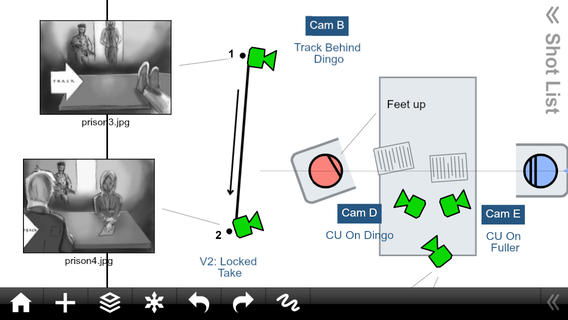
5.2 Storyboards: Breathing Life into Vision
On the flip side, storyboards breathe life into your creative vision. They serve as a visual script, allowing your talent, director of photography, and camera crew to grasp the narrative nuances. You don’t need Picasso-level drawing skills; there are user-friendly tools that can transform your ideas into storyboard frames. The goal here is clarity—communicate the emotion, pacing, and composition you envision. By sharing these storyboards, you ensure that everyone involved is on the same page, working towards a unified cinematic goal.
In essence, while overheads serve the technical aspects, storyboards encapsulate the soul of your film. Together, they become your cinematic GPS, guiding your crew through the visual tapestry you’ve intricately woven in your script. Remember, this phase is where the magic begins to materialize, and the synergy of technical precision and creative expression takes center stage.
6. Assemble Your Team: Crafting Collaborative Synergy
Filmmaking is not a solitary endeavor; it thrives on collaboration and shared passion. Now, as you move into the crucial phase of assembling your team, consider the following steps to foster collaborative synergy:
6.1 Identify Your Collaborators:
Start by reaching out to potential collaborators, whether they’re friends eager to participate, talented individuals in your network, or professionals willing to contribute their expertise. Assess their skills, gauge their enthusiasm, and build a team that shares your creative vision.
6.2 Skills Harmony:
Recognize the unique skills each team member brings to the table. If your forte lies in storytelling but lighting is a mystery, seek a skilled gaffer or director of photography who can enhance the visual aspects of your film. A harmonious blend of complementary skills can elevate the overall quality of your project.
6.3 Budget-Friendly Collaboration:
Collaborators are often drawn to compelling projects, even if the budget is limited. Leverage your charm, positive energy, and the intriguing nature of your project to build a team that’s not just on board but genuinely invested in the creative journey. Passionate collaborators can compensate for a modest budget through their dedication.
6.4 Roles and Responsibilities:
Clearly define roles and responsibilities within your team. Whether it’s a friend stepping into an acting role, a skilled cinematographer, or a dedicated sound engineer, ensuring everyone understands their contribution fosters a harmonious and efficient working environment.
6.5 Network and Expand:
Don’t limit yourself to existing connections. Reach out to local filmmaking communities, online platforms, or social media groups. You might discover hidden talents or individuals equally passionate about bringing stories to life. The filmmaking community is vast and supportive, offering a pool of potential collaborators.
6.6 Embrace Diversity:
Diversity in skills and perspectives can enrich your project. Consider collaborating with individuals from various backgrounds and experiences. This not only brings fresh ideas to the table but also contributes to a more inclusive and dynamic creative process.
As you finalize your team, remember that the essence of collaborative synergy lies in a shared passion for storytelling. With a dedicated and enthusiastic team by your side, the journey to creating a compelling short film becomes not just manageable but truly enjoyable. So, embrace the collaborative spirit, and together, let’s bring your cinematic vision to life.
7. Essential Elements of How to Make a Short Film
Whether your budget is expansive or snug, certain components remain critical for a successful film production. Here’s a strategic guide to optimizing your resources and making savvy choices:
7.1 Choosing a Camera:
Explore cost-effective camera options that align with your project’s needs. High-end cameras can be impressive, but many budget-friendly alternatives deliver remarkable quality, especially for short films when you need to shoot in multiple locations in just one day. Consider utilizing a DSLR or even your smartphone with advanced camera capabilities.
7.2 Renting Equipment:
Budget constraints often necessitate renting equipment rather than purchasing. Opt for affordable lighting kits and DSLR mics to enhance production quality without breaking the bank. Many rental services offer a wide range of options to suit your specific requirements.
7.3 Casting Your Talent:
While experienced actors can elevate your film, consider local talent or friends who share enthusiasm for your project. Collaborating with passionate individuals willing to contribute to your vision can result in authentic performances that resonate with your audience.
7.4 Securing Set(s) and/or Locations for Your Short Film:
Maximize your budget by selecting practical and accessible locations. Utilize existing spaces that require minimal set dressing or opt for public areas that don’t incur hefty location fees. Creativity in location selection can significantly impact your budget while enhancing the narrative.
Let’s say you’re aiming for a cost-effective production—your smartphone can seamlessly serve as your camera, demonstrating that innovation often trumps expense.
In the realm of short film production, resourcefulness and strategic choices can transform budget constraints into creative opportunities. Explore affordable alternatives, leverage community support, and maximize the impact of every dollar invested in your cinematic vision. Remember, a compelling story and inventive execution can eclipse any financial limitations, making your film truly memorable.
Film Composition Examples
Within this FREE PDF, you will discover:
- film composition examples in movies
- how filmmakers employ composition techniques
- how to create unforgettable cinematic experiences

8. Be Prepared: Leading the Charge on Set
As you step onto the set, your role as a leader takes center stage. Being prepared isn’t just about having the right equipment; it’s about setting the tone and fostering an environment where creativity can flourish. Here’s your guide to mastering leadership on set:
8.1 Arrive Early, Lead Proactively
Being the first to arrive at the set is not just a logistical advantage; it’s a leadership statement. Your punctuality sets the rhythm for the day, signaling commitment and dedication to the project. Use this time to survey the set, address any potential challenges, and lay the groundwork for a productive shoot.
8.2 Balance Positivity with Focus
Maintaining a positive atmosphere on set is more than a nicety—it’s a strategic move. Positivity fosters creativity and collaboration, lifting the spirits of your team. However, it’s equally crucial to balance this positivity with a clear focus on the project’s objectives. Your positivity should inspire, not distract, ensuring everyone is aligned with the day’s goals.
8.3 Lead, Don’t Dictate
Effective leadership is about guidance, not dictatorship. While you set the overarching vision for the project, encourage input from your team. Nurture an environment where ideas flow freely, fostering a sense of collective ownership. This collaborative spirit not only enhances creativity but also boosts morale.
8.4 Avoid Jerk Behavior
Effective leadership is about respect, not intimidation. Avoid negative behavior, yelling, or being overly critical. Building a positive rapport with your team will yield better results than a hostile approach.
8.5 Lead by Example
Your actions speak louder than words. If you expect dedication and professionalism from your team, embody those qualities yourself. Demonstrate a strong work ethic, a commitment to the project, and a willingness to get your hands dirty when needed. Your team will mirror the energy you bring to the set.
8.6 Effective Communication
Clear communication is the backbone of any successful project. Articulate your expectations, provide concise directives, and encourage an open channel for feedback. Miscommunication can lead to confusion and delays, so ensure everyone is on the same page regarding roles, responsibilities, and the creative vision.
9. Post-Production Mastery: Navigating the Creative Symphony
As you transition from the hustle of shooting to the artistry of post-production, meticulous organization becomes the linchpin of your creative endeavor. Here’s your compass for navigating the intricate terrain of post-production:
9.1 Organizing Your Footage with Precision
Before the magic of editing unfolds, lay the groundwork by organizing your footage systematically. This isn’t just about files and folders; it’s about creating a visual roadmap for your editor, ensuring every take and scene aligns with your narrative vision.
9.2 Collaboration with Your Editor
If you’re working with an editor (and even if you’re not), consider a collaborative yet individual approach to reviewing footage. Allow your editor to explore the material independently. This fresh set of eyes can unveil nuances and perspectives that might be overlooked during joint reviews. Once individual evaluations are complete, convene to discuss selections and solidify your creative direction.
9.3 The Art of Seamless Transitions
As you delve into the editing suite, aim for a seamless flow in your narrative. Smooth transitions between scenes enhance the viewer’s experience, maintaining engagement and cohesion. Whether you’re weaving a visual tapestry or orchestrating a montage, each cut should serve a purpose, contributing to the overall rhythm of your film.
9.4 Soundscapes and Sonic Identity
Post-production isn’t solely a visual affair; it’s also about crafting an auditory experience that complements your visuals. Invest time in curating a soundtrack that enhances mood, underscores emotion, and elevates your storytelling. Clean and impactful sound design can breathe life into your scenes, immersing the audience deeper into your cinematic world.
9.5 Color Grading: Painting Your Visual Canvas
Elevate the visual allure of your film through thoughtful color grading. This isn’t just about correcting hues; it’s about infusing your frames with a distinct visual identity. Experiment with tones and palettes that align with the emotional beats of your narrative, transforming your film into a captivating visual symphony.
9.6 Finessing the Final Cut
With the culmination of your creative efforts in sight, finesse the final cut with precision. Every frame contributes to the storytelling tapestry; ensure that pacing, timing, and sequencing align seamlessly. A cohesive final cut reflects the culmination of your artistic vision and technical finesse.
9.7 Strive for Continuous Improvement
Post-production isn’t merely a phase; it’s an ongoing refinement process. Stay open to feedback, iterate on your edits, and don’t hesitate to revisit scenes for further enhancement. A commitment to continuous improvement ensures your final product is a true reflection of your creative evolution.
In the realm of post-production, organization and creativity dance hand in hand. Embrace the challenges, celebrate the victories, and sculpt your film into a masterpiece that resonates with your audience. As you tread this final stretch of your filmmaking odyssey, remember that the heart of your creation beats within each meticulously edited frame.
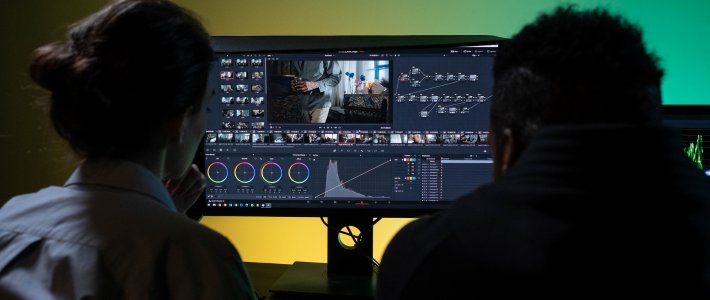
10. Reviews, Reviews, Reviews: External Perspectives
As a dedicated creator, you’ll inevitably immerse yourself in your short film, watching it repeatedly. While your eyes offer familiarity, external perspectives are invaluable for refining your work. Before the official release, extend your creation to friends and family, encouraging open dialogue and constructive critique. Embrace fresh eyes, as they provide unique insights that can polish your film to perfection. This collaborative approach ensures your final edits reflect a harmonious blend of your creative vision and the diverse perspectives that make your film resonate universally.
11. You Did It and Found an Answer to The Question: How to Make a Short Film? Now Celebrate Your Triumph
No matter the investment, producing a short film is a triumph worth savoring. It’s a testament to your creativity, resilience, and dedication. So, when the final cut is ready and the credits roll, take a moment—a cinematic pause—to acknowledge what you’ve accomplished.
Invite those who shared the journey—friends, family, collaborators—to join in the celebration. Gather around, let the screen light up, and watch your creation unfold. It’s not just a film; it’s a culmination of countless decisions, challenges overcome, and a vision brought to life.
As the closing scene plays out, toast to your cinematic journey. Acknowledge the late-night edits, the script revisions, and the teamwork that breathed life into your story. Because, in the world of filmmaking, each finished project is more than a mere creation; it’s a triumph etched in frames and emotions.
So, set the stage, dim the lights, and let the credits roll on your achievement. Raise a glass to the journey, the challenges met, and the stories yet to be told. Your short film is not just a piece of art; it’s a testament to your passion, creativity, and the thrilling adventure of filmmaking. Cheers to your triumph and the cinematic legacy you’ve begun!
Explore related content
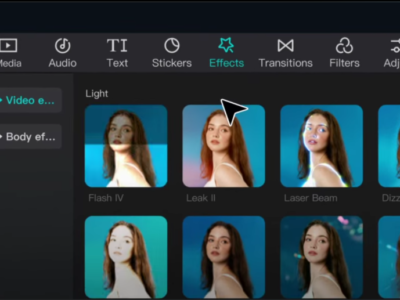
Video Editing Tips CapCut: Tips, Tricks, and Techniques
Video editing is an art, and there are proper tools and techniques, through them everybody… Read More »Video Editing Tips CapCut: Tips, Tricks, and Techniques
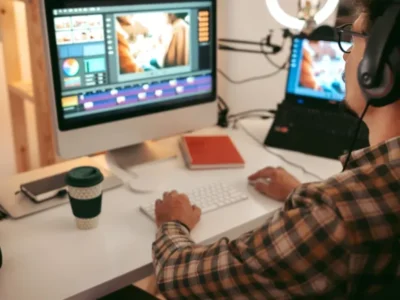
Factors to Consider Before Buying a Video Editing Computer
From helping grow your brand and business to editing just for fun with the love… Read More »Factors to Consider Before Buying a Video Editing Computer
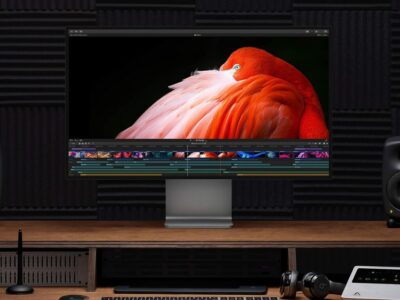
Best Video Editing Monitors in 2024
In the evolving world of video production, the importance of a high-quality monitor cannot be… Read More »Best Video Editing Monitors in 2024